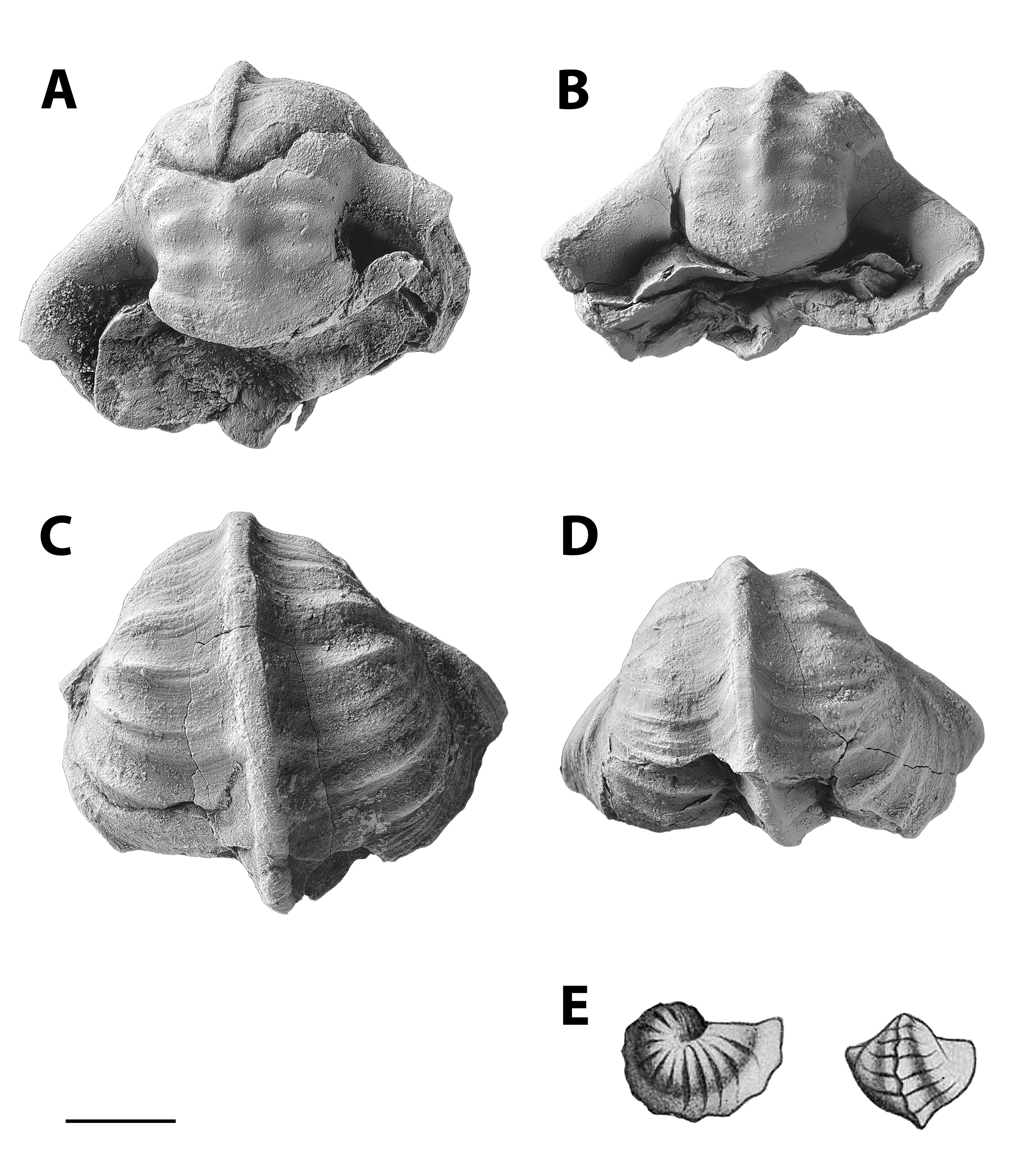Subclass Amphigastropoda Simroth, 1906
Order Bellerophontida McCoy, 1852
Superfamily Bellerophontoidea McCoy, 1852
Family Bellerophontidae McCoy, 1852
Genus Pharkidonotus Warthin, 1930
Species percarinatus Girty, 1912
Girty erected the subgenus Pharkidonotus in 1912. Conrad (1842) first described Bellerophon percarinatus from a specimen found by Dr. James Trimble of Huntingdon, Pennsylvania, at one of the inclined planes dug out for transporting rail cars over the Allegheny Mountains to the East. Researchers have known the name Bellerophon for over 200 years, first described by Montfort in 1808.
These gastropods are unusual. The shell is bilateral and symmetrical, divided from the center of the aperture, and coiled like a cephalopod. P. percarinatus has a raised ridge—the selenizone—a slit in the shell through which the animal’s exhalant channel flowed. The mirrored columella gives the anterior end a winged look. Taxonomists have debated over the placement of these creatures under Gastropoda for some time due to the shell configuration. The shells coil like those of a cephalopod yet have no internal chambers. Girty (1912) noted heavy plications on the surface of Pharkidonotus and how Bellerophon differs due to its strong growth lines.
While the name is often written as Bellerophon (Pharkidonotus) precarinatus, its placement under the Bellerophontidae seems sufficient to call these Pharkidonotus. Yochelson (1960) suggested that Pharkidonotus should be a subgenus due to its characteristic undulations. Some species show a reduction of this feature, or it can be undetectable in old age. While these are helpful ideas, properly ornamented Pharkidonotus are easily distinguishable from Bellerophon. Yochelson acknowledged that both Bellerophon and Knightites look the same in steinkern form.
In both locations, they appear in the calcareous shale above the limestone. Unfortunately, the anterior margins of the aperture often appear broken because the shells are fragile.
Pharkidonotus percarinatus Plate

References
- Sedgwick, A., McCoy, F, 1850–1855. A synopsis of the classification of the British Palæozoic rocks; With a systematic description of the British Palæozoic fossils in the Geological museum of the University of Cambridge.
- Simroth, H. (1906). Versuch einer neuen Deutung der Bellerophontiden. Sitzungsberichte Der Naturforschenden Gesellschaft Zu Leipzig, 32: 3–8.
- Girty, G. H., 1912. On some new genera and species of Pennsylvanian fossils from the Wewoka Formation of Oklahoma. Annals of the New York Academy of Sciences 21(2):119–156
- Warthin, A. S., 1930. Micropaleontology of the Wetumka, Wewoka, and Holdenville formations. Oklahoma Geological Survey Bulletin 53

Late Carboniferous Fossils from the Glenshaw Formation in Armstrong County, Pennsylvania
Preface | The Photographic Process
Localities: Locality SL 6445 Brush Creek limestone | Locality SL 6533 Pine Creek limestone
Bivalvia: Allopinna | Parallelodon | Septimyalina
Cephalopoda: Metacoceras | Poterioceras | Pseudorthoceras | Solenochilus
Gastropoda: Amphiscapha | Bellerophon | Cymatospira | Euphemites | Glabrocingulum | Meekospira | Orthonychia | Patellilabia | Pharkidonotus | Retispira | Shansiella | Strobeus | Trepospira | Worthenia
Brachiopoda: Cancrinella | Composita | Isogramma | Linoproductus | Neospirifer | Parajuresania | Pulchratia
